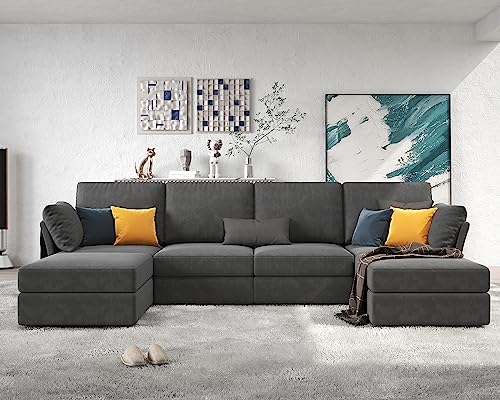추천맛집 | 5 Killer Quora Answers On What Are U Shaped Valleys
페이지 정보
작성자 Bernd 작성일24-08-08 11:57관련링크
본문
 What Are U Shaped Valleys?
What Are U Shaped Valleys?A U-shaped valley is an geological formation that has steep, high sides and a rounded or flat valley bottom. They are the result of glaciation and are frequently home to lakes, rivers and sand traps found on golf courses kettle lakes (water hazards) and other natural features.
Glacial erosion creates U-shaped valleys when rocks are removed from the sides and the bottom of the valley. These valleys are found in mountainous regions around the globe.
They are created by glaciers
Glaciers are huge bodies of ice that form and slide down mountains. As they erode the landscape they create sectional u shaped couch-shaped valleys that have flat floors and steep sides. These valleys are distinct from the river valleys, which are usually shaped in the shape of a V. Although glacial erosion can take place anyplace, these valleys tend to be more common in mountainous areas. They are so distinct that you can tell whether the landscape has been shaped by glaciers or rivers.
The formation of a U-shaped gorge begins with an existing V-shaped river valley. As the glacier erodes it, it expands into the V-shaped valley of the river and creates a U-shaped inverted shape. The ice also scour the land's surface creating straight and high walls on the sides of valley. This process is known as glaciation and requires the use of a lot of force to move the earth in this manner.
As the glacier continues to degrade the landscape, it makes the valley larger and deeper. The glacier's ice is less abrasive than the rocks. As the glacier moves through the valley, it also causes abrasion to the surfaces of the rocks. This pulls the less durable rocks away from the valley walls through a process called plucking. These processes work together to widen, deepen and smooth the U-shaped valley.
This can cause small valleys to "hang above the main one. The valley could be filled with ribbon lakes formed when water flows through the glacier. The valley is also marked by striations, ruts and striations on the sides and the floor, as well as till and moraines on the floor.
The world is full of U-shaped valleys. They are most often found in mountainous regions like the Andes Mountains, Alps Mountains, Himalaya Mountains, Caucasus Mountains, and Rocky Mountains. In the United States, they are usually found in national parks. Examples include the Nant Ffrancon valley in Wales and Glacier National Park in Montana. In some cases the valleys can extend to coastal locations and then become fjords. This is a natural process that occurs when the glacier melts. It can take thousands of years to create these valleys.
They are deep
U-shaped valleys are distinguished by steep sides that curve at the bottom and a wide flat valley floor. They are created by river valleys that were filled with glaciers during the Ice Age. Glaciers erode the valley floor through abrasion and plucking which causes the valley to get deeper and expand more evenly than a river could. These kinds of features are prevalent throughout the globe in mountainous regions including the Andes, Alps, Himalayas, Rocky Mountains, and New Zealand.
The erosion of the glacier in a valley may transform it into a U-shaped valley by enlarging and deepening it. The erosive power of the glacier also causes smaller side valleys to hang above the main valley, which is usually identified by waterfalls. These features are called "hanging valleys" because they are suspended above the main valley when the glacier retreats.
These valleys are often surrounded by forest and contain lakes. Some valleys can be used for farming, while others are flooded. A majority of these valleys are located in Alaska which is where glacial melt is at its most intense.
Valley glaciers are massive, flowing like rivers that slowly slide down the slopes of mountains. They can reach depths of over 1000 feet and are the dominant form of valley erosion in regions of alpine. They devour the rocks at the bottom of the valley, leaving the area with depressions or holes, which are then filled with water. The lakes that result are wide and long and are found on the tops of certain mountains.
A glacial trough is another type of valley. It is an contemporary u shaped sectional shaped valley that extends out into the saltwater to form the fjord. They can be found all over the world including Norway and are referred to as Fjords. These are formed by melting ice and are visible on maps around the globe. They are usually characterized by rounded sides that resemble a U shape in cross-section and steep sides. The walls of the troughs are generally made of granite.
The slopes are steep.
A U form valley is a geological formation with high, steep sides and a smooth bottom. They are frequent in mountainous regions and are often carved by glaciers. This is due to glaciers being slow-moving rivers of ice which move downhill, scouring the land as they move. Scientists used to believe that glaciers wouldn't be able to carve valleys due to being so soft. But now, we know that they can.
Glaciers create unique U-shaped valleys by the process of abrasion as well as plucking. Through erosion these processes may broaden, steepen, and deepen V shaped valleys of rivers. They also change the slopes of the valley floor. These changes happen at the top of a glacier as it moves through the valley. This is the reason why the U form valley is typically wider at the top and narrower at the bottom.
U-shaped valleys are often filled with lakes. These kettle lakes form in hollows caused by erosion of the glacier, or blocked by the moraine. The lake may be a temporary one as the glacier melts, or it could remain after the glacier receding. They are usually found in conjunction with cirques.
A flat-floored valley is another kind of valley. It is formed by streams that erode the soil. However it does not have a steep slope like a U-shaped one. They are usually found in mountainous areas and are often older than other kinds of valleys.
There are many different types of valleys across the globe and each has its own distinct appearance. The most popular kind of valley is a V-shaped, but there are also rift and U-shaped valleys. A rift valley forms where the earth's surface is splitting into two. These are usually narrow valleys that have steep sides. The Nant Ffrancon valley in Snowdonia, Wales is a good illustration of this.
They are broad
Unlike V-shaped valleys, U-shaped valleys have broad bases. Glaciers are responsible for creating these valleys, which are typically located in mountain ranges. Glaciers are huge blocks made of snow and ice that alter landscapes as they slide downwards. They cause valleys to be eroded by friction and the abrasion. This erosion is known as the scouring. As they erode the landscape, glaciers create distinct shapes that resemble an U-shaped letter. These valleys, also referred to as U-shaped valleys, can be found in a variety of locations around the globe.
These valleys form when glaciers erode valleys of rivers. The glacier's slow motion and weight is able to erode the valley's sides and floor creating a distinct U shape. This process, also known as glacial erosive erosion has created some of the most stunning landscapes on Earth.
These valleys are also called trough valleys, or glacial troughs. These valleys can be found all over the globe, but are most often found in areas with glaciers and mountains. They range in dimensions from a few meters to hundreds of kilometers. They can also vary in depth and length. The temperature fluctuation will be higher the deeper the valley.
A ribbon lake or fjord is formed when a U-shaped gorge fills with water. The ribbon lakes form in the depressions in which the glacier cut the rock with less resistance. They also can be formed in valleys where the glacier was halted by a wall of moraine.
Aside from ribbon lakes, U-shaped valleys can also be filled with glacial features such as erratics, hanging valleys and moraine dams. Erratics are massive boulders that were deposited by glaciers during their movement. The erratics can be used to mark the boundaries between glaciated areas.
Hanging valleys are smaller side valleys that are suspended above the main valley formed by the glacier. They are less ice-covered and aren't as deep. These valleys are cut by tributary ice, and are usually topped by waterfalls.

의견을 남겨주세요 !
등록된 댓글이 없습니다.


